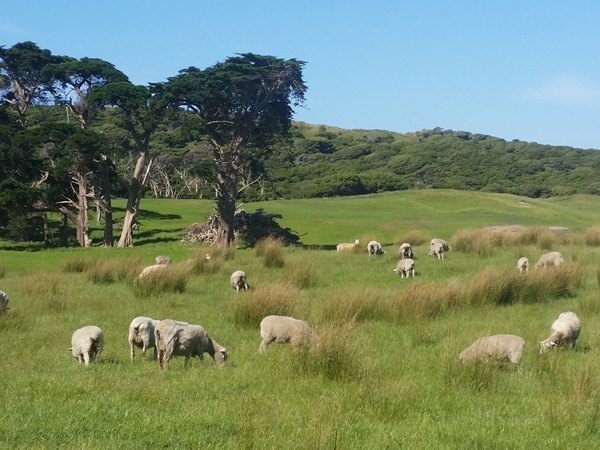
GWCT's Head of Farmland Ecology Professor John Holland explains how farming and conservation has changed on his return to New Zealand
I have been fortunate enough to be able to return to where I did my PhD almost 30 years ago.
In those days, the country was still covered with sheep (almost 40 million), but numbers were falling from the peak of 70 million in 1982. This decline was primarily due to the removal of farm subsidies that had far-reaching effects across the whole of the economy and the farming landscape. The main change since then has been a switch to dairy and beef cattle with 6.4 and 3.6 million, respectively.
As I drove from Auckland near the top of the North Island down to Christchurch in the South Island, the changes are plain to see. Where once there were large open areas with sheep grazing, a farming system that to my eyes blended in with the wilder parts, there are now smaller fields (paddocks) with huge irrigation systems, dense herds of cows and is some places box-shaped windbreaks.
Commercial forestry with clear felling also predominates in some areas. It all makes for quite a messy looking landscape. In these ways, NZ parallels more with the US, where conservation is primarily reserved for the National Parks and agricultural land is intensively managed for production, with little native habitat.
There are of course exceptions, but the Canterbury plains, for example, have 0.5% of native vegetation remaining. This, though, is the reality of farming without subsidies and being exposed to world market forces. All of these changes have inevitably come with some environmental consequences and, of great concern over here now, is the impact on water quality, with this even being picked up in the British press.
As we approach Brexit there may be lessons that we can take from how agriculture has developed here and the implications for the environment and I will be looking more into this over the next couple of months.
The other big change is that I don’t recall seeing many British birds 30 years ago, but now they seem to be everywhere, even in some of the remoter parts of the bush. The early settlers introduced 130 bird species with 41 still remaining, of which blackbird, house sparrow, starling, song thrush and chaffinch being the most common in gardens. There is even a garden bird watch that was established in 2007 based upon the one conducted in the UK, which is now run by one of the Trust's previous PhD students, Catriona MacCleod.
This has revealed that, as in the UK, more species are decreasing compared to those that are increasing, although some are on the increase, including greenfinch. Worryingly, the most common native species, the Silvereye, has declined by 44% over the past 10 years, while overall four out of five native species are threatened. New Zealand also struggles with invasive species and especially the four-legged predators (stoats and rats especially) along with possums that decimate the native trees and can take bird eggs and chicks, whilst also spreading bovine TB.
New Zealand has started the process of aiming to become predator free by 2050 and it will be fascinating to follow the process to see if and how this can be achieved (something to look forward to in old age!). There will be much the UK can learn if we want to do the same for mink.
